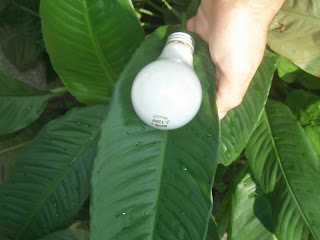50. Endosperm
 Endosperm is the tissue produced in the seeds of most flowering plants. It is the tissue containing stored food in a seed that surrounds the embryo and is eventually digested by the embryo as it grows at the time of fertilization.
Endosperm is the tissue produced in the seeds of most flowering plants. It is the tissue containing stored food in a seed that surrounds the embryo and is eventually digested by the embryo as it grows at the time of fertilization.49. Xylem
 Xylem is the wood of a tree, made up of strong fibers, tracheids and vessels. It is vascular tissue designed to help transport water and minerals from the root to the leaves. This is a picture of the bottom of a tree. Xylem helps this tree's leaves recieve enough water.
Xylem is the wood of a tree, made up of strong fibers, tracheids and vessels. It is vascular tissue designed to help transport water and minerals from the root to the leaves. This is a picture of the bottom of a tree. Xylem helps this tree's leaves recieve enough water.48. Rhizome
 A rhizome is a horizontal underground stem, with leaves and buds, that serves as a storage organ and a means of vegetative propagation. It is a horizontal underground stem of some plants that sends out roots and shoots from its nodes.
A rhizome is a horizontal underground stem, with leaves and buds, that serves as a storage organ and a means of vegetative propagation. It is a horizontal underground stem of some plants that sends out roots and shoots from its nodes. 47. Biome
 This is a picture from Shelter Island. Beyond the water is a forest, which is an example of a biome. A biome is aliving community characterized by distinctive plant and animal species and maintained under the climatic conditions of the region. Biomes include: permanent ice, mountain, desert, grassland, scrub forest, chaparral deciduous forest, taiga, and tundra.
This is a picture from Shelter Island. Beyond the water is a forest, which is an example of a biome. A biome is aliving community characterized by distinctive plant and animal species and maintained under the climatic conditions of the region. Biomes include: permanent ice, mountain, desert, grassland, scrub forest, chaparral deciduous forest, taiga, and tundra.46. Radial Symmetry















































